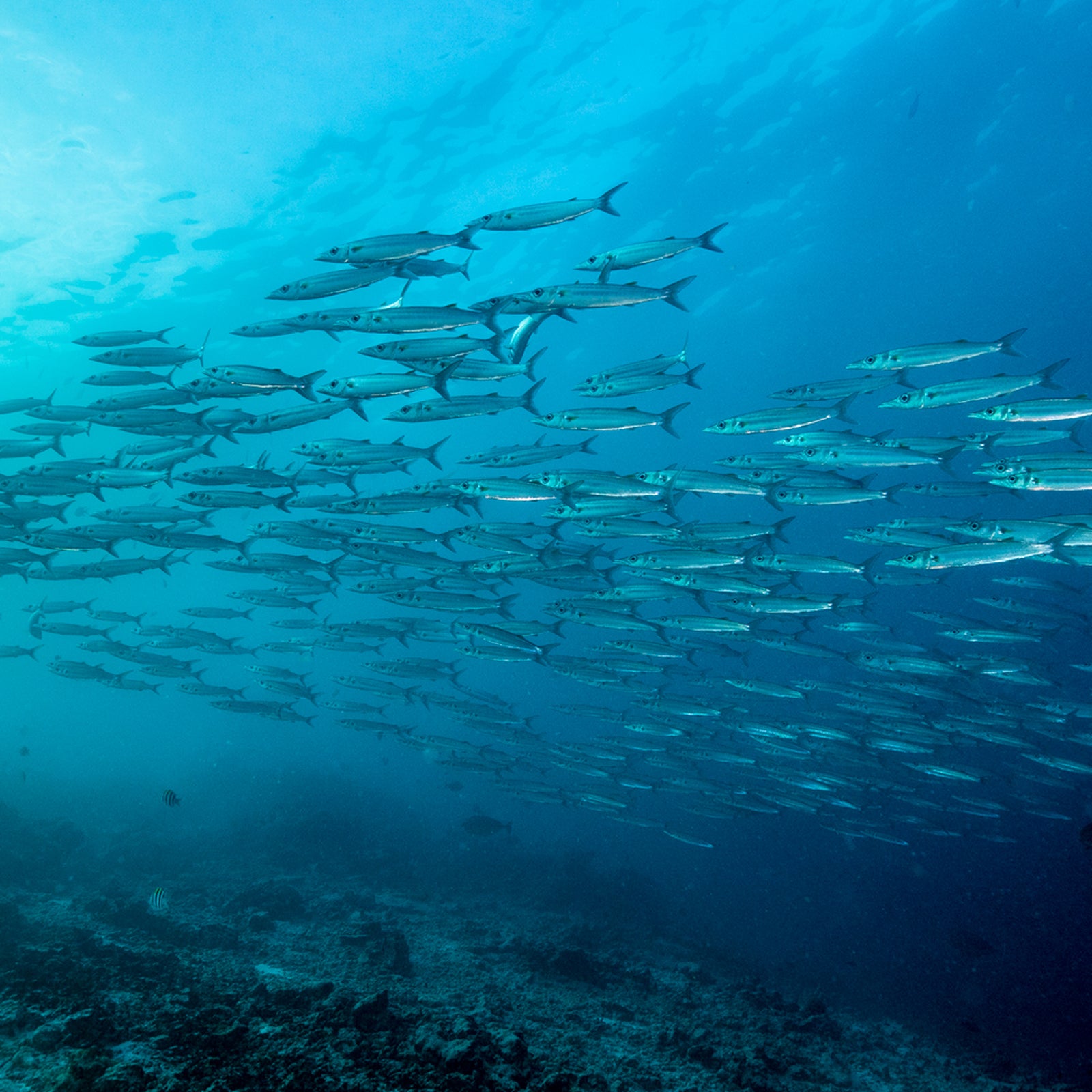Netflix’s new documentary ��has a single call to action for its viewers: stop eating fish. The film hops from one issue facing the ocean to another—showcasing dolphin slaughter, shark finning, industrial bycatch, plastic waste, and ocean acidification—but concludes that each��is a symptom of overfishing (or��less damaging than��it). Claiming that industrial fishing is doing more harm��to the ocean than anything else, the film’s director and star,��Ali Tabrizi,��makes the case that well-meaning citizens must cease��consuming fish completely in order to stop the destruction. To many marine scientists, however,��this is a gross oversimplification.
The film’s most controversial claim is that there’s no such thing as sustainable fishing. “This is like saying that sustainable agriculture doesn’t exist,” fisheries biologist Bryce D. Stewart . The Marine Stewardship Council, which certifies some seafood with a label indicating it was sustainably harvested—a label that Seaspiracy calls out as “meaningless”— standing by its practices:��“Research shows that fish stocks that are well-managed and sustainable, are also more productive in the long-term, meaning there is more seafood for our growing global population, which is set to reach 10��billion by 2050,” it reads in part.
, individuals from the , Lancaster University, and ��all say their portrayals��in the film misrepresented their stances on topics��like dolphin-safe tuna and sustainable fishing.��Seaspiracy also claims that at our current rate of overfishing, the oceans could be empty of fish by 2048. That claim is based on a 2006 study that, according to its own author, today.
, fisheries expert Daniel Pauly says: “Seaspiracy does more harm than good. It takes the very serious issue of the devastating impact of industrial fisheries on life in the ocean and then undermines it with an avalanche of falsehoods.” Pauly argues that the documentary misplaces the blame for overfishing and employs anti-Asian stereotypes, among other issues.
Casper Ohm, a marine biologist based in the UK, takes a similar view of the film. “Few truths are thrown into a sea of oversimplified interpretations—and worse, misinformation—on a broad topic that encompasses a series of complex, intersectional issues,” he says. “Nonscientific viewers may not be able to differentiate between facts and falsehoods.”
We asked Ohm and some��other experts to recommend alternative documentaries that you can stream online��if you want to learn more about the health of the ocean.
‘The End of the Line’
Recommended by: Casper Ohm, founder of the Water Pollution Institute, and Cherilyn Chin, former aquarist at the Monterey Bay Aquarium
The 2009 documentary��The End of the Line starts with a story about the 1993 collapse of the Atlantic cod fishery due to overfishing, which devastated Newfoundland’s economy. It goes on to show that the same story could soon play out for other fish species across the globe, highlighting the bluefin tuna fishery��in particular. “Man has been hunting fish in the sea since he discovered they were there,” says actor Ted Danson, who narrates the documentary, toward the beginning. The film thoroughly explores the different angles of this hunt across time and geography.
The End of the Line is��intellectually rigorous and airs��perspectives from multiple fisheries scientists, including Daniel Pauly, even when they disagree. One thing all the sources agree on is that��the world has too many fishing boats chasing too few fish. However, unlike Seaspiracy, the filmmakers behind The End of the Line believe that there is such a thing as sustainable fishing, and they endorse consumer labeling efforts, such as the Marine Stewardship Council’s certification.
Ultimately, this film��has three requests for its audience: buy only sustainable seafood, tell politicians to enforce fishing laws, and support the creation of .��The End of the Line��“was the first documentary to comprehensively look at the worldwide fishing industry,” says Chin.
‘Racing Extinction’
Recommended by: Cherilyn Chin and Ayana Elizabeth Johnson, cofounder of the Ocean Collectiv��and��the Urban Ocean Lab
Racing Extinction, which came out in 2015,��offers a wide-ranging look at species that are at risk of dying out, with a particular focus on marine creatures. It’s directed by Louie Psihoyos, CEO of the Oceanic Preservation Society, who also directed the documentary The Cove, about dolphin slaughter in Taiji, Japan.��Racing Extinction��opens with Psihoyos helming a sting operation at a restaurant in Santa Monica, California, that serves whale meat. It homes in on the illegal shark-fin trade, with a heartbreaking shot of a nurse shark sinking to the sea floor after a fisherman catches it, cuts its fins off, and then throws it back into the sea, sentencing it��to a slow death by immobility. But between those disturbing scenes, there’s also plenty of footage of Psihoyos and his colleagues diving with blue whales, dolphins, and whale sharks, which will surely enhance��your appreciation for the watery parts of our world.
Though the filmmakers clearly have a penchant for using undercover sting operations to catch wildlife traffickers, they appear to engage respectfully with Indigenous people, such as manta ray fishermen in Lamaka, Indonesia. (The village of Lamaka has since begun a “” away from manta ray hunting and toward manta ray tourism, with the help of the filmmakers and several NGOs.)
Racing Extinction��also contends that human consumption of land-based meat and dairy products is a major force behind the methane emissions driving climate change and that it threatens the ocean more than overfishing does.
‘Chasing Coral’
Recommended by: Ayana Elizabeth Johnson and Cherilyn Chin��
Chasing Coral,��released on Netflix in 2017,��puts the spotlight on coral-reef habitats across the planet, from Hawaii to Australia. This film teaches viewers that the ocean’s entire ecosystem depends on the health of coral reefs—but��thanks to ocean acidification wrought by global warming, those��reefs aren’t doing so well. Chin describes the film as “a comprehensive and touching look at coral bleaching.” Coral bleaching is��the term for what happens when coral reefs are exposed to warmer water—they turn white. Bleaching can either be a temporary or permanent death for these creatures, which provide a home to vast communities of sea life.
Director Jeff Orlowski was on a mission to map the world’s coral reefs,��Google Street View-style, when he realized that he also wanted��to document major coral-bleaching events to show people the impact of climate change.��A significant portion of the film is devoted to the difficulties of underwater time-lapse recording, which might be a bit too in the weeds for some viewers, but the importance of those time lapses is obvious: nothing can match the impact of seeing colorful coral reefs blanch over days or weeks when the water heats up.
Like The End of the Line and Racing Extinction, Chasing Coral acknowledges and respects that many communities around the globe��depend on fishing to survive, which means they depend on coral reefs. The film closes with a stark message: “If we don’t address the warming of the planet, we will lose this ecosystem, and millions of people will suffer.”
Bonus Recommendation
“If readers are really interested in the complex issues surrounding the oceans and fishing, it is hard to glean the full story from documentaries,” says��Marin Hawk, a fisheries biologist at��the . “A book I recommend is , by Paul Greenberg, which really is a classic in fisheries and explains some of the higher-level issues the sector is facing.”


